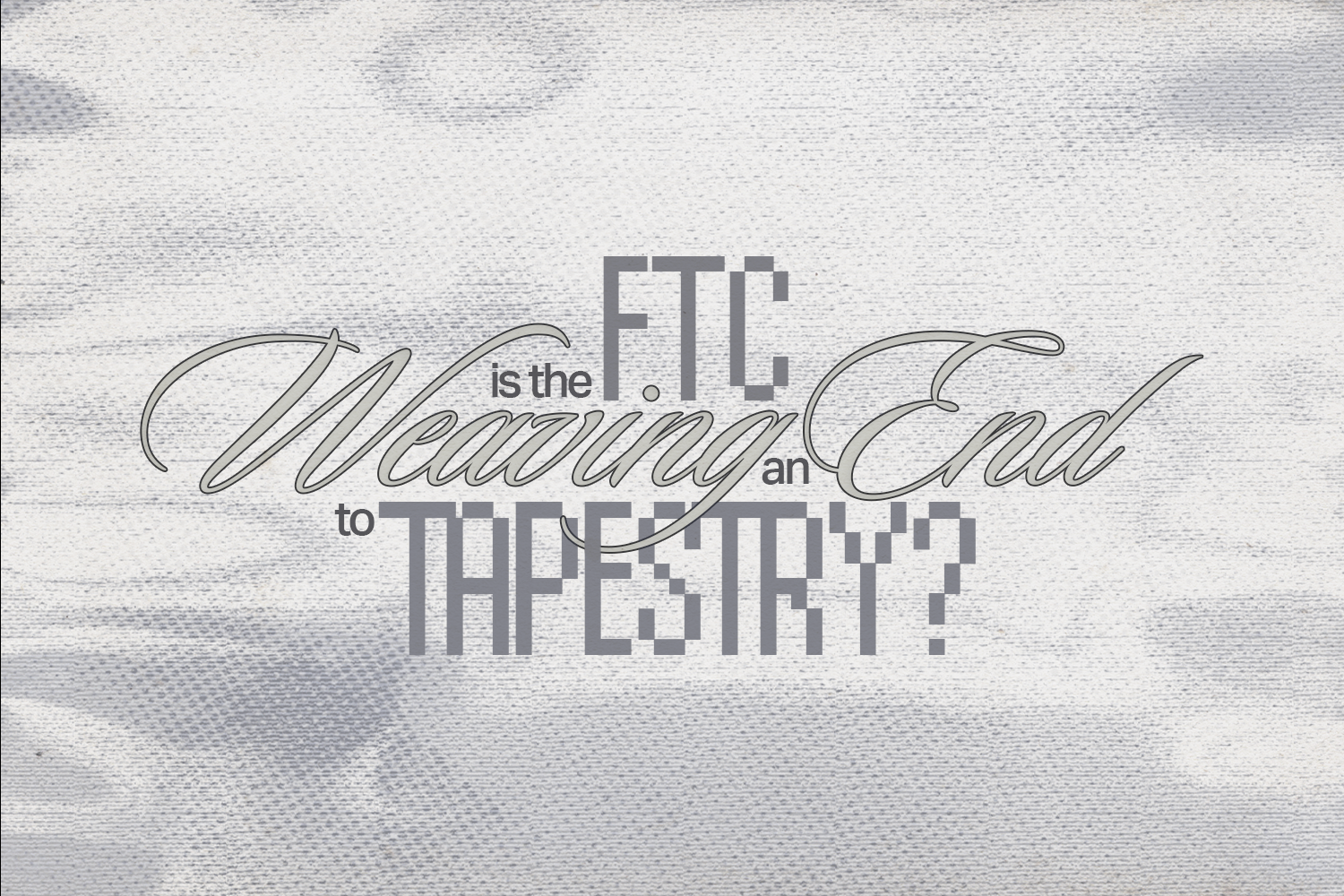When you think of the biggest fashion conglomerates in the industry, the first ones that come to mind are usually LVMH or Kering. However, Tapestry is going through the motions to become a company mentioned among the giants. Back in August of 2023, Capri Holdings announced that Tapestry was officially in talks to purchase them for a total of 8.5 billion dollars.
However, that deal was not without its problems. They finally got EU and Japanese approval to merge the two companies, but then the FTC moved to sue and block this merger. This is an unprecedented move in the fashion industry, as there is no shortage of alternatives and competition, so arguing a monopoly case will be a difficult position. However, the government’s claims are not without merit, as FTC Director of the Bureau of Competition Henry Liu has said: “With the goal to become a serial acquirer, Tapestry seeks to acquire Capri to further entrench its stronghold in the fashion industry”. The FTC worries that with this merger, the accessible luxury segment will be dominated by Tapestry and drive up the prices. However, the CEO of Tapestry, Joanne Crevoiserat, says these claims are irrelevant to the industry: “It’s quite clear to us that they don’t understand how consumers shop today and they don’t understand the dynamics of a marketplace with no barriers to entry, constant influx of new competitors”.
Though monopoly cases in the fashion industry are rare, when two companies of this size are combined, it certainly raises some red flags. Tapestry owns Coach, Kate Spade, and Stuart Weitzman, all popular brands in the entry-level luxury market. Capri Holdings owns Michael Kors, Jimmy Choo, and Versace, which mostly fall above the typical price point of the Tapestry companies. Some common reactions to the merger worry that the Jimmy Choo and Versace image will be cheapened, but others argue that with the experience of managing a designer shoe company like Stuart Weitzman, Capri Holdings will not suffer from new management.
However, the financial world has not been optimistic about the possibility of the deal finalizing. Many have been shorting the two companies and predicting a failure to complete the purchase. Shares of Tapestry (TPR) dropped by about 18%, while Capri Holdings (CPRI) shot up by almost 34%. But after a lot of talk and little movement in both companies until now, CPRI has nearly dropped to its pre-announcement level due to a lack of progress and the news of the FTC trying to block the merger from happening. TPR had risen back above its pre-announcement level, but now investors’ patience is thin, and the price is starting to falter. After the FTC confirmed the lawsuit, CPRI plummeted back to before its August spike, and TPR had a sharp drop before returning to its normal volatility levels.
But what does this mean for the broader fashion industry? For many, Tapestry is not a large name in the fashion world compared to giants like LVMH, but it still has very consistent output. Coach and Kate Spade don’t focus on big-ticket items like their high-fashion contemporaries but have high-traffic stores and high-volume purchases. For them, this more consistent business model works well at stabilizing revenue but will sadly never gain as much recognition as brands like Louis Vuitton or Givenchy. However, Capri Holdings has very similar movements, with Michael Kors already being one of Coach’s chief rivals. Jimmy Choo and Stuart Weitzman are both in the designer footwear market, and they can benefit from that shared experience. Versace is the only odd man out. Many assume that Versace was already under one of the luxury conglomerates like Kering, but instead, it has been functioning as the luxury flagship of Capri Holdings since 2018. Even though they do not have the backing of a larger parent company, they still operate in the same circles as the other flagship designer brands. Versace has stores in major shopping capitals, is showcased at fashion week, and their diffusion products (such as eyewear) are sold at high-end marketplaces. With the possibility of a merger, will these brands lose their image? Will the industry lose diversity and variety? It is unlikely, as with how many brands are in the ecosystem today, a merger like this will not impact much besides the brand’s already controlled territory.
If Capri Holdings and Tapestry successfully combine, what are we left with? A much more varied company, covering most of the entry-level luxury market and breaking into the designer and luxury footwear market. The last main hurdle to become a new powerhouse is the US FTC. Even if it does not pass through the legal obstacles, we have still learned about the industry and how it operates. Is this potential company a monopoly? Maybe, but it still comes nowhere close to some of its contemporaries. While it may turn into the American LVMH, there is no shortage of competition in the industry, and the entry-level luxury market will not suffer heavily from this acquisition. The FTC has some real points to make in this case, but stopping this merger may not be possible. Monopoly cases are already hard to argue, and a fashion case at this scale has never happened before. The lawsuit is still ongoing, but no matter the outcome, Tapestry and either a standalone or absorbed Capri Holdings are solidifying their place in the industry as growing titans of fashion.
Words by Dexter Slinn.
Graphics by Aubrey Lauer.

